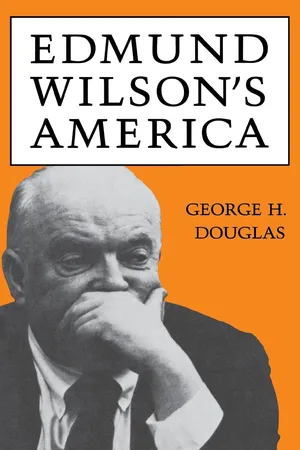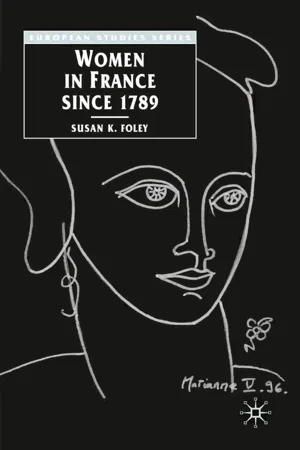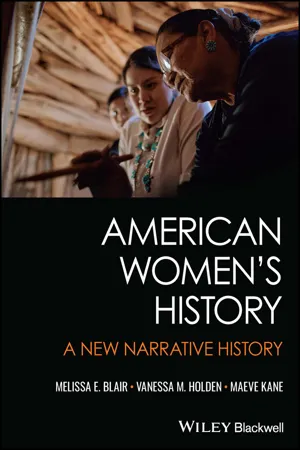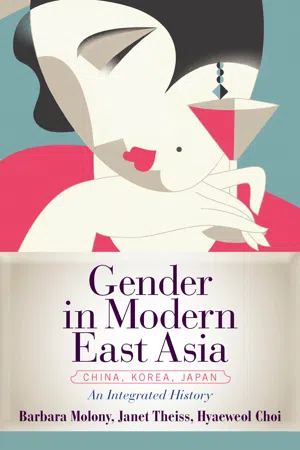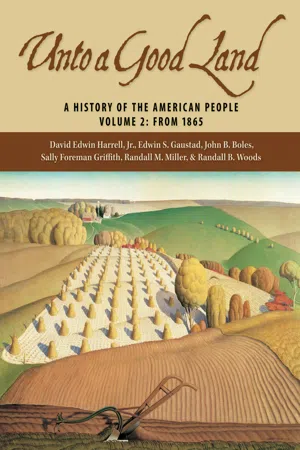History
Women of 1920s
In the 1920s, women experienced significant social and cultural changes, often referred to as the "Roaring Twenties." This era saw the rise of the flapper, a symbol of women's newfound independence and liberation. Women's roles expanded beyond the domestic sphere, with increasing participation in the workforce and the fight for suffrage, marking a transformative period in women's history.
Written by Perlego with AI-assistance
Related key terms
1 of 5
6 Key excerpts on "Women of 1920s"
- eBook - PDF
- George H. Douglas(Author)
- 2014(Publication Date)
- The University Press of Kentucky(Publisher)
But what is especially instructive is that the greater complexity and confusion of social life led to more than a paper liberation of American women. Indeed it is questionable whether the paper liberation was very important. What was important was that the American woman became in the course of only one generation supercharged with interest and complexity. No longer tied to the stove and the hearth, even untutored lower-class women like Marie and Anna were thrown into circumstances where they could develop rich emotional lives, tender sensibilities that a generation or so be-fore would have had to have been boxed up or destroyed in all but the very rare individual. When we look around at the decade of the 1920s, we see that the age was a propitious time for the American woman, that there was something of a burst of creative energy in literature and the arts. A large number of women came to the fore as leading intellectuals, artists, writers, even scientists. In view of the fact that women in the 1960s and 1970s were expressing the belief that creative women were previously the rare exception, it is surprising to find that in the 54 EDMUND WILSON'S AMERICA 1920s women were taking hold very rapidly and that the woman writer (for example), far from being a rara avis, was a common and respected figure. Before the decade of the 1920s was over it would probably be possible to say that no country in the history of the world had produced more sensitive and intelligent women writers in such a short span of time. Some of the best are neglected today, which is to be regretted, but Wilson did not neglect them in the twenties, or in the later years of his career. Many of his essays from the twenties are devoted to literary and biographical studies of women writers who came suddenly to prominence after World War I—women as distinct and varied as Edna St. - eBook - PDF
Women in France Since 1789
The Meanings of Difference
- Susan Foley(Author)
- 2017(Publication Date)
- Bloomsbury Academic(Publisher)
156 WOMEN IN THE ERA OF THE GREAT WARS, 1890–1944 The ‘modern’ woman – educated, employed in white-collar or professional work, wearing ‘sensible dress’, and more independent than the ‘traditional’ woman – made her appearance amongst urban elites before the war. Her appearance contributed to, and symbol-ised, the collapse of the cultural certainties that had shaped the world of the Belle Epoque. Like the new generation of writers, composers and artists who overturned creative conventions in this period, the ‘modern woman’ was culturally threatening, if not as immediately dangerous as the strikers and anarchist bombers who challenged the power structures of the Third Republic. She rattled the cage of ‘traditional’ womanhood, and hence the gender structure on which bourgeois society was built. War strengthened the movement for change in women’s social position, at least by default. Rich or poor, urban or rural, women took on new roles and assumed new responsibilities. Some did so eagerly, others because there was no alternative. As France faced the new conditions of the post-war world, therefore, the question of women’s place in that world was central. The aspirations of ‘new women’ were opposed by those who desired a society with distinct male and female roles. This pattern of sexual relations seemed to promise normalcy and security in a world shattered by conflict. The 1920s were therefore marked, not by the triumph of ‘new women’, though they refused to go away, but by ongoing tension over women’s appropriate roles. The changing lives of women in the Belle Epoque In 1883, Emile Zola’s new novel Au Bonheur des Dames addressed a popular theme. This novel (‘Ladies’ Delight’ or ‘Ladies’ Paradise’ in English) was the story of a department store closely modelled on the Paris icon, the Bon Marché. - eBook - PDF
American Women's History
A New Narrative History
- Melissa E. Blair, Vanessa M. Holden, Maeve Kane(Authors)
- 2023(Publication Date)
- Wiley-Blackwell(Publisher)
The workplace was not the only, or the most visible, location of change in the 1920s. A flapper, a young woman with short hair, a loose knee-length dress, and a cloche hat, is one of the most enduring images of the 1920s. This image emerged from magazine and newspaper articles about female college students. Women’s rate of college attendance, while still low, accelerated in the 1920s, with a much higher percentage of women choosing co-ed, public universities like the Universities of Iowa and Kentucky, as opposed to the private women’s colleges earlier generations had favored. In this co-ed environment, young women experimented with a new phenomenon called dating. Dating mimicked the structure of treating that working- class young people had developed at the turn of the century – the young man would pay for dinner or a movie with the expectation of some kind of physical repayment at the end of the date. Magazines ran articles about “petting parties,” where co-eds engaged in a much higher level of sexual play than earlier generations were assumed to have done. However, one thing that did not change were the rules around inter- course. While it was suddenly seen as acceptable, at least among peers, for young women to engaging in necking and petting, intercourse was still forbidden among “nice girls” until they became engaged. Statistics suggest that young people followed these rules. In an era with very limited birth control options and abortion illegal, premarital pregnancy rates did not go up. For many, the biggest changes that the shifting sexual norms of the 1920s brought were within marriage, rather than outside of it. Marriage was still seen as the end goal for most young people. But those marriages were supposed to be marked by a new emphasis on the friendship and compatibility of the married couple. - eBook - ePub
- Barbara Molony, Janet Theiss, Hyaeweol Choi(Authors)
- 2018(Publication Date)
- Routledge(Publisher)
Chapter 5 ), was the educated, patriotic embodiment of a new gender order working to overcome the oppressions of the Confucian family system and traditional society. The Modern Girl appeared a bit later, in the 1930s, and tended to represent a commodified, glamorous, and individualist vision of modern femininity. However, there was considerable overlap between the terms. Female students, for example, displayed aspects of both. Living on their own, with their eyeglasses, short hair, and calf-length skirts revealing unbound feet sometimes iin high-heeled shoes, they were the most visible of the numerous models of modern femininity in the early twentieth century. While reformers across the political spectrum saw women’s education as essential for modern progress, these students’ independence from family, display of fashion, and open, casual relationships with men drew accusations of frivolity and immorality.By the 1920s and 1930s, women in new roles—professionals, factory workers, secretaries, department store clerks, shopgirls, entertainers, and prostitutes—were prominent all over China’s cities. These changes happened first and most rapidly in Shanghai, the sixth-largest city in the world, the cultural, financial, and industrial center of Republican-period China, and its most globalized city. Cultural trends in Shanghai filtered out to provincial cities through a rapidly expanding commercial press and popular culture industry.The Woes of the Modern Woman
The concept of the New Woman appeared first in the writings of men in New Culture journals such as New Youth. - eBook - ePub
Unto a Good Land
A History of the American People, Volume 2: From 1865
- David Edwin Harrell, Edwin S. Gaustad, John B. Boles, Sally Foreman Griffith(Authors)
- 2005(Publication Date)
- Eerdmans(Publisher)
Women led the dramatic change in lifestyle in the twenties. The availability of consumer goods helped emancipate women from the drudgery of housework. The automobile was an ideal laboratory for sexual experimentation, and in it one could escape the community-enforced moral code of the small town. Perhaps most important, the dissemination of information about birth control, promoted vigorously by Margaret Sanger, somewhat undermined the pillar of the double standard of morality, woman’s fear of pregnancy. Birth control gave women new sexual freedom and also contributed to a declining national birth rate and the lengthening of women’s life expectancy.The intellectual oracle of the new morality was Sigmund Freud. To be sure, few Americans really understood Freud, but psychoanalysis encouraged uninhibited discussions of sex that would have been unthinkable a decade earlier. At the popular level, the lesson read into Freud was the urgency of escaping from sexual repressions.To some extent, the changing role of women was tied to the perception that women had become financially less dependent on their husbands. Actually, women made few economic gains during the decade. They entered the workforce in unprecedented numbers during World War I, but most of them left again after the war. The image of the economically self-reliant working girl of the twenties is largely a myth. The total number of women in the labor force of the country rose from 8.3 million in 1920 to 10.6 million in 1930, but that represented a gain of less than one percentage point—to 23.6 percent of the total labor force. The number of married women working did increase significantly during the decade, from 23 percent of women workers to 28.9 percent. But most women continued to live in traditional families and to work in low-paying female occupations—nurses, teachers, secretaries, sales clerks, waitresses, and domestic servants. Women did make up a majority of those employed in the emerging field of social work, and many held leadership positions in the profession. - eBook - PDF
- Michael Adas(Author)
- 2010(Publication Date)
- Temple University Press(Publisher)
These activities only increased across the course of the century, despite devastating wars, global depression, rising con-flicts for independence from colonialism, and a deepening interconnectedness— both for good and for ill—of the world’s peoples. In fact, historians have CH APTER 3 Women in the Twentieth-Century World _ Bonnie G. Smith 84 • CHAPTER 3 remarked on the coming to the forefront of women, self-consciously as women, across the globe during the twentieth century. Additionally, from the twentieth century on, there was regular global commentary about women in-stead of the sporadic eruption of debates that alternately denigrated or defended them that cropped up from time to time—in fourteenth-century Europe or eighteenth-century China, for example. Nor was this eruption of awareness about womanhood confined to the elites. Although workingwomen had been active in previous centuries on behalf of themselves and their families, such ad-vocacy became more consistent and widespread than ever before, leaving histo-rians today still charting the course of women’s recent, consequential past. Work and Politics as the Century Opens As the twentieth century opened, few women led the privileged and secure life of Rokeya Sakhawat Hosain, and most lacked the wherewithal to give their efforts over to helping others. In contrast to her wealth and literacy, they eked out a living as unschooled peasants, domestic workers, craftswomen, and fac-tory hands. Some performed their work as slaves. In addition to earning a liv-ing, they cared for children and aged parents and maintained their households. By far the greatest work responsibilities in the first decades of the twentieth cen-tury occurred on farms and in households. Women tended crops such as rice, manioc, and cotton, oversaw the production of milk, cheese, and other dairy products, and did the onerous work of preparing food in days before there were many modern household appliances.
Index pages curate the most relevant extracts from our library of academic textbooks. They’ve been created using an in-house natural language model (NLM), each adding context and meaning to key research topics.
